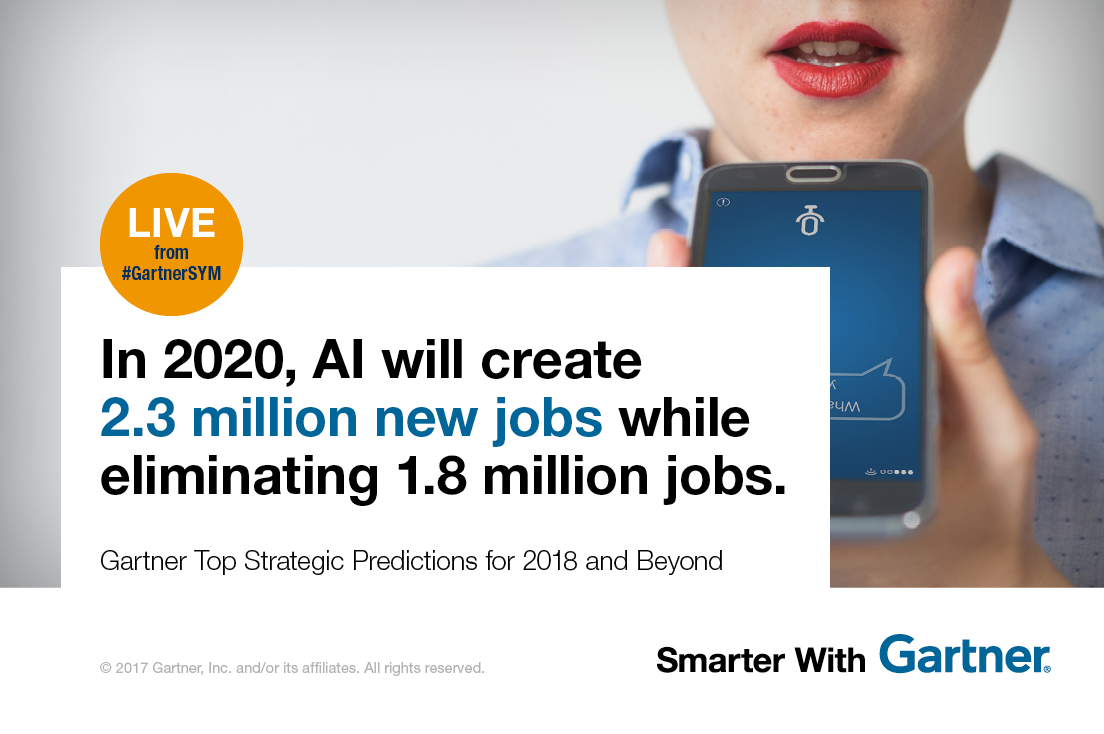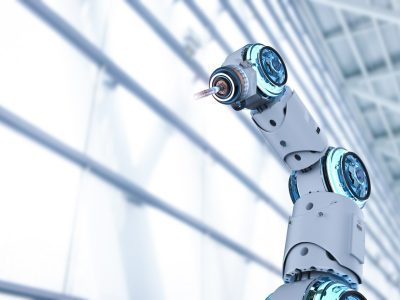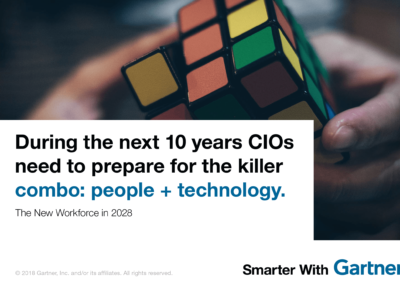From bots and AI to counterfeit reality and fake news, these predictions require IT leaders to pace their adoption.
 In houses of the future, the coffeemaker will know the ideal brewing temperature based on an image of the package uploaded by your smartphone, the washing machine will scan and read garment labels, and the air-conditioning unit will be capable of monitoring its own maintenance schedule and self-reporting any issues. The interesting part is all of these features were the result of an inexpensive technology added in before designers were even certain of specific uses.
In houses of the future, the coffeemaker will know the ideal brewing temperature based on an image of the package uploaded by your smartphone, the washing machine will scan and read garment labels, and the air-conditioning unit will be capable of monitoring its own maintenance schedule and self-reporting any issues. The interesting part is all of these features were the result of an inexpensive technology added in before designers were even certain of specific uses.
This is the picture of connectivity via the Internet of Things (IoT) painted in the Gartner top strategic predictions for 2018 and beyond.
The continued evolution of digital innovation has resulted in seemingly endless options and technologies available for companies. This trend won’t end anytime soon, and IT leaders need to adjust their digital strategies to develop a reasonable pace for adoption and bimodal development.
“CIOs in end-user organizations will need to develop a pace that can be sustained no matter what the future holds,” says Daryl Plummer, vice president & Gartner Fellow, at Gartner Symposium/ITxpo 2017 in Orlando. “Our predictions provide insight into that future, but enterprises will still be required to develop a discipline around how pace can be achieved.”

-
Consumers Favor Visual and Voice Search
By 2021, early adopter brands that redesign their websites to support visual and voice search will increase digital commerce revenue by 30%.
With visual and voice search rapidly increasing in popularity and on the way to being dominant mobile search modes, enterprises should experiment to identify the best ways to capitalize on this consumer shift. This search type enables marketers to gather more robust information about consumer habits, and early responders will see an increase in conversion rates, revenue, new customers and customer satisfaction. -
Digital Giants Self-Disrupt
By 2020, 5 of top 7 digital giants will willfully self-disrupt to create their next leadership opportunity.
Digital giants such as Amazon, Apple, Facebook and Google disrupted industries by looking to previously unexplored options such as chatbots, conversational UX, and visual and voice search. However, the giants have grown so large, it is difficult to find new external areas to disrupt, so these enterprises will turn to self-disruption, e.g., potentially disrupting their own revenue bases to create new opportunities. Remember that Apple disrupted the MP3 industry, where it had a leading product in the iPod, with the iPhone. While this reduced revenue for Apple iPods, it allowed the iPhone to replace navigation systems, digital cameras and other functions. -
Legitimized Cryptocurrencies
By the year 2020, the banking industry will derive $1B of business value from the use of blockchain-based cryptocurrencies.
When compared to the estimated $7.6T that is the industry gross output of the world’s banking industry, $1B may not seem like much. However, the value is more about the tacit endorsement of cryptocurrency as a legitimate option by the banking industry. With the legalities of cryptocurrencies also being worked on and more than 900 cryptocurrencies on the market, the banking endorsement could open doors to other industries. -
Increased Fake News
By 2022, the majority of individuals in mature economies will consume more false information than true information.
With an increasing amount of fake news, companies need to closely monitor what is being said about their brand and the context in which it is being said. Brands will need to cultivate a pattern of behavior and values that will reduce the ability of others to undermine the brand. -
Counterfeit Reality Overtakes Reality
By 2020, AI-driven creation of “counterfeit reality,” or fake content, will outpace AI’s ability to detect it, fomenting digital distrust.
Counterfeit reality is digital media manipulated to portray events that never occurred or did not occur in the manner in which they are presented. Currently, artificial intelligence (AI) can successfully categorize images as well as humans at a fast rate. Although AI also has the best chance of detecting and fighting counterfeit reality, it has also increased the ability to create it. Unfortunately, the ability to detect lags behind the ability to create. -
Bots Take Over
By 2021, more than 50% of enterprises will spend more per annum on bots and chatbot creation than traditional mobile app development.
Individual apps are out. Bots are in. In the “post-app era,” chatbots will become the face of AI and bots will transform the way apps are built. Traditional apps, which are downloaded from a store to a mobile device, will become just one of many options for customers. -
Versatility Wins Over Specialization
By 2021, 40% of IT staff will be “versatilists” holding multiple roles, most of which will be business- rather than technology-related.
Specialists currently represent 42% of the entire IT workforce, but bimodal and digital business initiatives will require a complete transformation of skill sets. Starting in I&O and eventually ending in architecture, IT will see an increase in nontechnical IT managers and an evolution to versatilists. -
AI Creates More Jobs Than It Takes
In 2020, AI will become a positive net job motivator, creating 2.3M jobs while only eliminating 1.8M jobs.
AI will have a positive effect on jobs with AI-related jobs seeing steady growth starting in 2020. Up through 2020, all industries will see varying levels of time and effort savings with most industries experiencing no job loss. More than replacing humans entirely, AI will augment existing jobs and improve productivity. -
IoT in Everything
By 2020, IoT technology will be in 95% of electronics for new product designs.
With the technology evolution surrounding the IoT, it will become increasingly possible to add IoT features to a product at minimal cost. While security challenges need to be sorted, suppliers should begin to think about how to implement this technology, toward which consumers will soon gravitate, into every electronics-enabled product. -
Assume IoT Security Vulnerabilities
Through 2022, half of all security budgets for IoT will go to fault remediation, recalls and safety failures rather than protection.
Due to challenges in determining security risks and exposure for IoT, current budgets for security spend is minimal. However, the scale of IoT into various markets will outpace support systems, resulting in a need for recalls for devices that cannot be patched.
Get Smarter
Digital Disruption ebook
Disruption is everywhere. Learn how CIOs can stay ahead of challenges and use disruption as a tool for competitive advantage in the complimentary Digital Disruption ebook.
Client Research
Read more about the predicts in the full research Top Strategic Predictions for 2018 and Beyond: Pace Yourself, for Sanity’s Sake.
Free Research
Read more about the 2018 predictions in this complimentary report Top Strategic Predictions for 2018 and Beyond
Gartner Symposium/ITxpo 2017
Learn more about CIO leadership and how to drive digital innovation to the core of your business at Gartner Symposium/ITxpo 2017. Follow news and live updates from the event on Twitter using #GartnerSYM.










